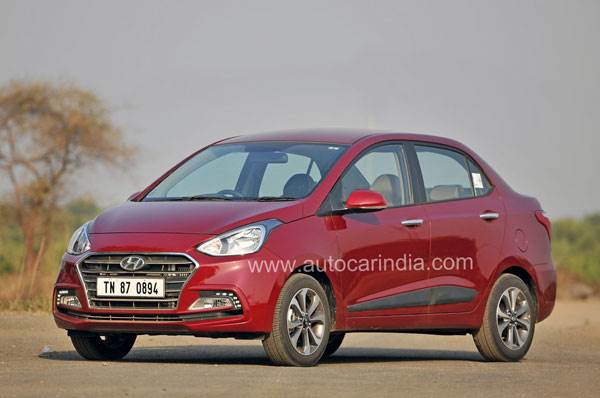2017 Hyundai Xcent facelift review, test drive
The facelifted Xcent gets revised styling, added equipment and a more powerful 1.2-litre diesel engine.
Published on Apr 20, 2017 01:30:00 PM
48,800 Views
Follow us on



What is it?
Hyundai launched its first compact, sub-four-metre sedan back in 2014. Based on the European i10 hatchback, it was built using a longer wheelbase to make it more suitable for sale in India. The car featured European build quality and a whole host of features Indian car buyers would kill for. The Xcent, however, didn’t really scale the heights. Its three-cylinder 1.1-litre diesel was a tad underpowered, suspension was set up so stiff that it often crashed and thudded through even medium-size potholes, and then the cabin was quite narrow on the inside.
Hyundai, with the recent facelift of the Xcent, however, says it has gotten rid of many of these issues and has taken big strides in areas where the car needed a bit of propping up. For starters, it looks quite different from the Grand i10 when viewed from the front. A conscious decision to distance itself from the hatchback and give the car an identity of its own, the new nose is bold and very in-your-face. The bonnet hasn’t been re-profiled, but the bumper, grille and chin are completely changed. The new ‘cascading grille’ is an evolution of Hyundai’s hexagonal grille, and according to designers in the company, has been inspired by the flow of molten metal. Alongside the grille are a pair of horizontally located fog lamps with LED surrounds. And the chin of the new Xcent also has air inlets in the bumper – these help channel air around the front wheels by using what is known as air curtain, thus improving aero efficiency. While the new grille clearly gives the car a strong identity, it also does look a bit over the top and a half size too big for the nose.

While there aren’t too many changes around the sides, apart from the larger new wheels, the rear of the car has also been thoroughly updated. The new tail-lights make the rear of the car look almost Audi-like and because the base of the bumper has been widened, the view from the back looks extremely muscular.
What’s it like on the inside?
The biggest change on the inside is noticeable in form of the updated 7.0-inch touchscreen. The update brings the same new software that’s on its big sister, the Elantra, and the system allows drivers to use Apple CarPlay and Android Auto, among multiple other useful apps. Functionality is slick, connecting your phone is nice and easy and CarPlay works so well here, it makes using the phone so much safer. What’s also evident is the huge step up in quality in comparison to other cars in this class. While the quality of the cabin hasn’t been improved further, the fit and finish of the dash, the way in which the steering is crafted, the deft manner in which the controls function, all point to a very high level of sophistication. The finish of the steering wheel is, in fact, so good, the detailing so fine that it could pass muster on a much more expensive car. And the same goes for the gear lever – it’s nothing short of a work of art, its chrome, leather and Plexiglas finish a complete joy to hold. The cabin isn’t too wide and sitting three abreast in the back will be tight. But even backseat comfort is good. There’s a fair amount of legroom, the seat base is placed at a good height and you even get an air-con vent to keep you cool. The backrest of the Xcent, however, is a bit too reclined and not as comfortable as it could have been.
Copyright (c) Autocar India. All rights reserved.


















Comments
Member Login
Personal Details
No comments yet. Be the first to comment.